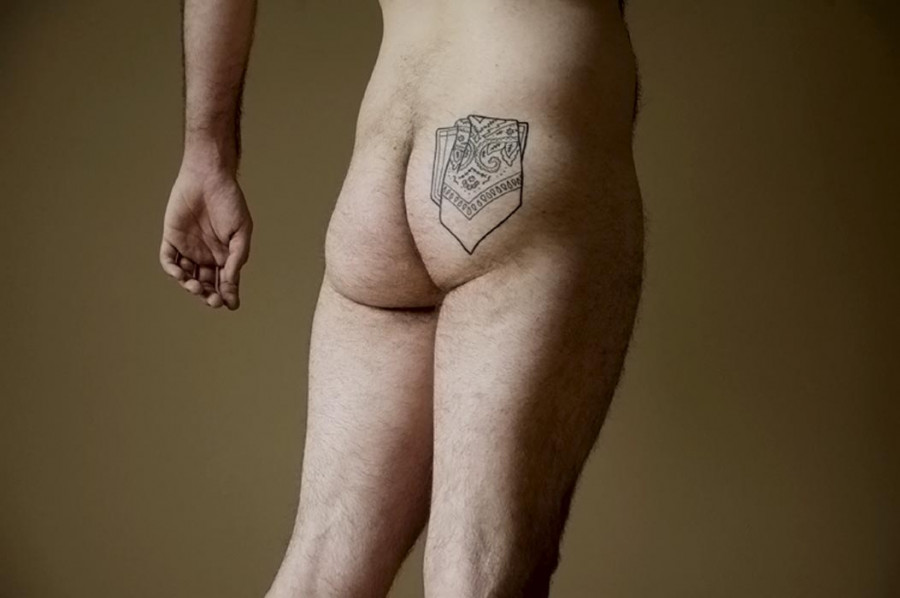Making the Private Public
Ligne, Image, Texte Puts the Human Body on Display
“It has been hard to find forums to make work like this public,” said Michelle Lacombe, performance artist and one of three artists featured in Ligne, Image, Texte, an event that will use the human body as a means for expression.
“The works are on our bodies, so we can’t really exhibit them [laughs], but this is our way of sharing them with a larger public,” said Lacombe.
The event consists of three separate body art projects, in the form of tattoos on the bodies of Lacombe (in collaboration with Emilie Roby), Vincent Chevalier and Sheena Hoszko. The tattoos are research-based, conceptual artworks, and will become ongoing performances.
“Each artist’s project is presented for about 15 to 20 minutes and then we have invited Erin Silver, who is an art historian who has worked with performance art, to come and moderate a conversation,” said Lacombe. “So after we do a kind of basic presentation where we talk about what we did and what happened—which is more concrete information. Erin and us artists will keep having a conversation about the works, and that will be open to the public as well.”
Each tattoo is linked thematically through issues of feminism and gender theory. Lacombe has been especially involved and interested in body and performance art since she graduated four years ago.
“I think it’s different for all three of us. Like I have a very active body art practice, I’ve done a number of body art works which have included different types of body modification—scarification, tattooing, stuff like that—and in my performance practice I use the body a lot and experiment with things like passing out, so the body as material is really important in my work,” said Lacombe.
“So I just said ‘Let’s make a proposal and see if we can get a gallery to recognize it,’ and because of the themes, La Centrale was perfect because we’re dealing with feminist history and queer aesthetics and feminine philosophy so that fits with the mandate of the centre.
“I know, for myself for instance, when I do body art works I usually can’t find support for them because they’re not images or they’re not performances in front of audiences in the traditional way, so usually they’re done independently. This is one of the first times that a work has been officially supported and framed in a professional context,” she continued.
Lacombe had Roby tattoo seven symbolic lines on her body. The lines impede the natural curves of the human body and fragment it. This particular piece was inspired by Giorgione’s painting “Sleeping Venus,” one of the first art works that depicted the nude female body in Western art history. She calls the resulting work “The Venus Pose.”
“This image of the nude in drawing is kind of archetypal and I was really interested because as a performance artist there is a tradition of trying to break away from the image of the body as object,” said Lacombe. “The female nude has created this huge cultural precedence on how we read art, especially the white female body. So as a white female body performing regularly in art, I am quite aware of that, and I’m also aware of the tradition of feminist artists trying to work against this image.
“I’m trying to create a kind of discourse of opposition. I’m more interested in trying to explore how this reading of the nude is present in the body, or present on the body, but also how it falls apart on a real body and how it’s impossible.” Marking her body with lines from the painting’s figure is an attempt to connect the represented body with the real.
Lacombe hopes that this event will open doors for more performance artists to have a public forum for their work in the future.
“I think on a really personal level I’m like, ‘Yeah let’s see more of this type of work happening and let’s make visible the work that is happening within our communities.’ It’s just hard to see because there’s no way for it to become public.
“And also just in a more general sense I think that it’s important to support practices that are still considered more experimental or that are pushing the boundaries. I think it’s really meaningful to me that artist-run centers and galleries are trying to find ways to support practices that maybe don’t fit in a typical frame.”
Ligne, Image, Texte is happening Thursday, Feb. 3 at La Centrale Galerie (4296 St. Laurent) at 7:00 p.m.
This article originally appeared in Volume 31, Issue 21, published February 1, 2011.


_600_832_s.png)
